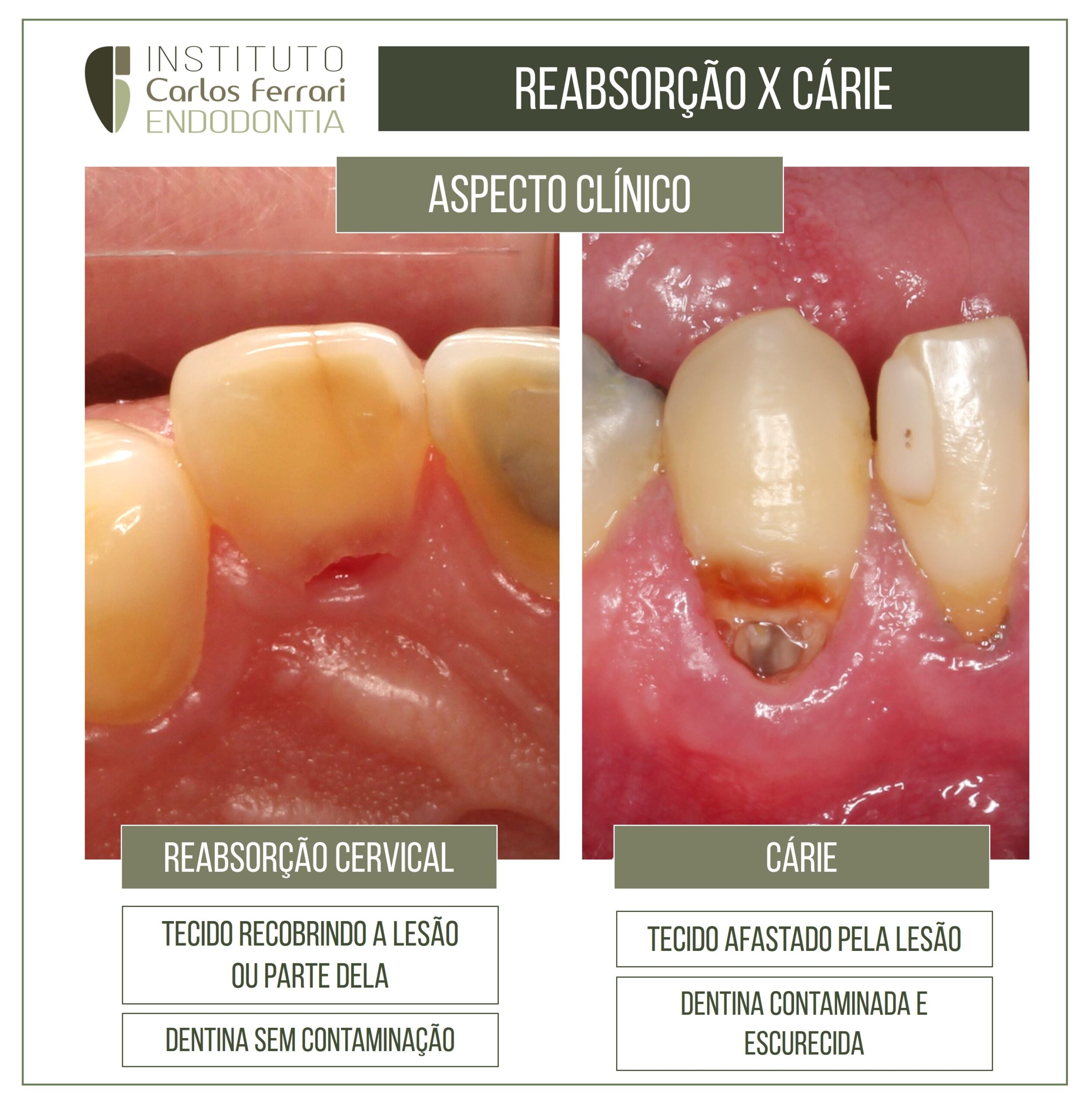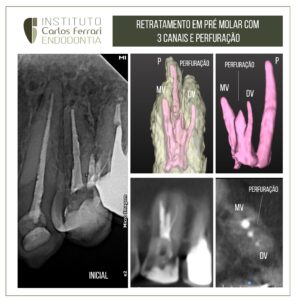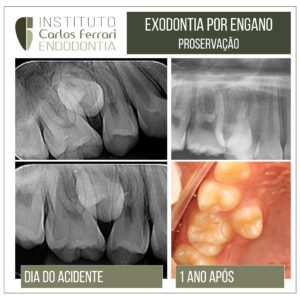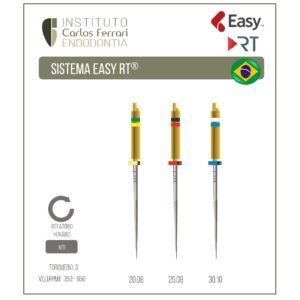Cervical resorption or caries?
Often lesions in the cervical region are a source of doubt as to their origin and type of pathology.
The following are clinical and radiographic characteristics that help us differentiate between neck caries and external cervical resorption.
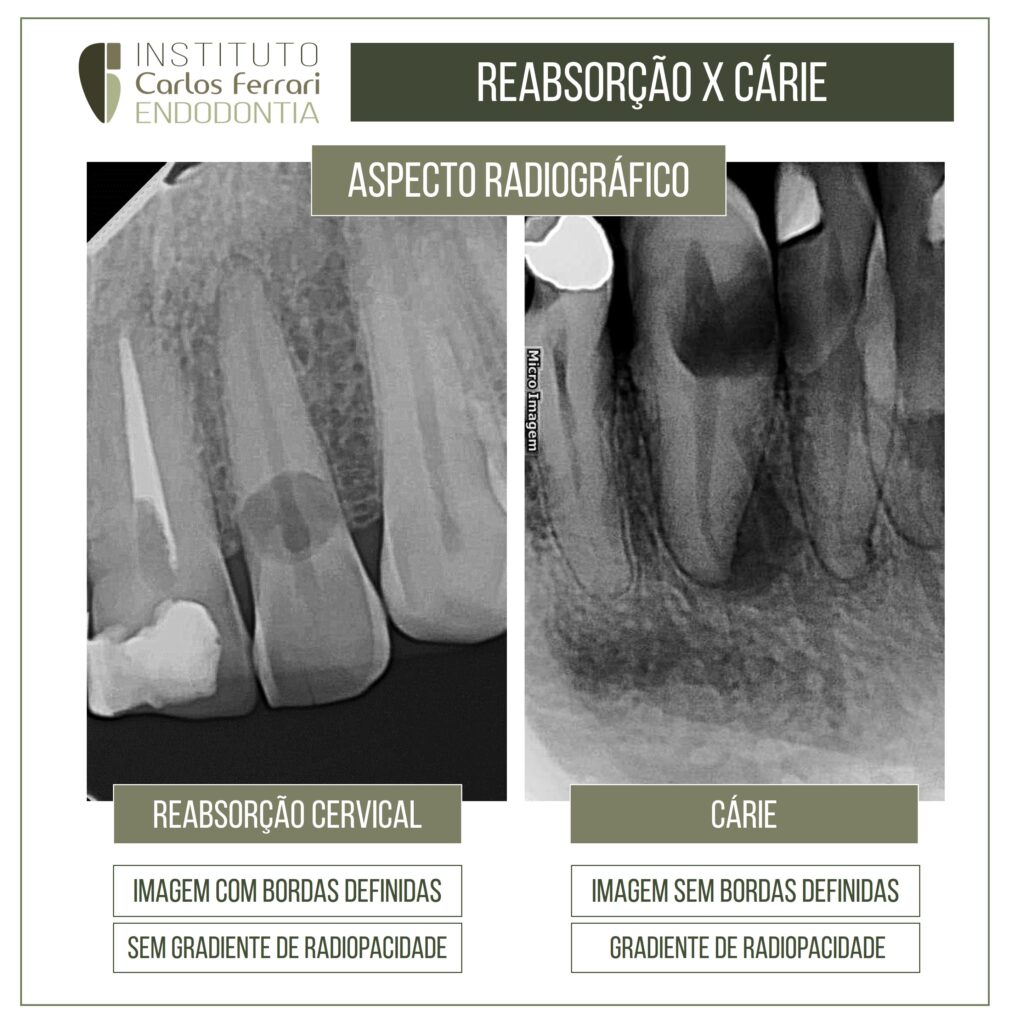
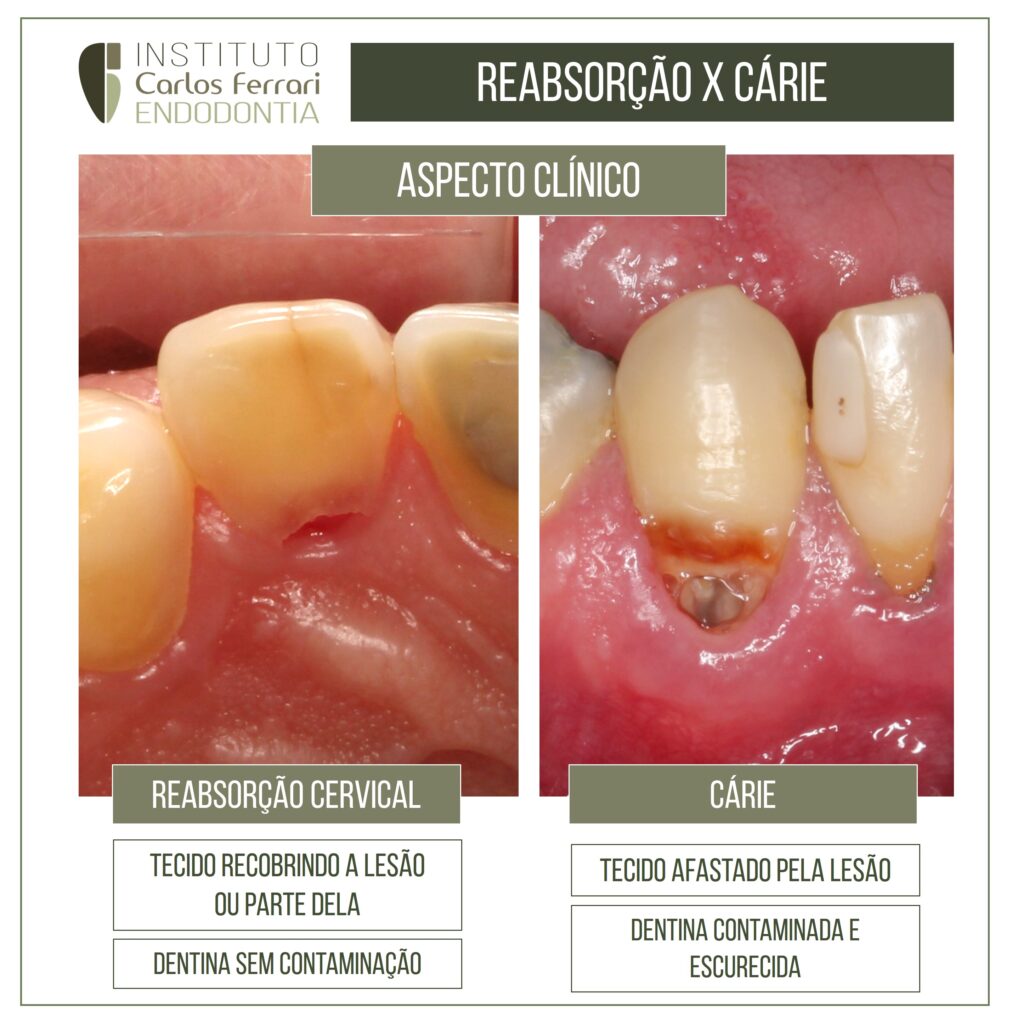
Cervical resorption and caries. In: Consolaro et al. External cervical resorption and neck caries: differential diagnosis and clinical implications.Revista Dental Press de Estética. v. 8, n. 4, p. 123-134, Oct./Dec. 2010
Abstract: The differential diagnosis between external cervical resorption and neck caries must take into account the homogeneous and uniform radiolucency and clear boundaries with the adjacent dentin in external cervical resorption lesions. In neck caries, the lesions have a radiolucency in the form of a decreasing gradient towards the pulp, with diffuse boundaries at the interface with the adjacent dentin. This difference occurs because in caries the adjacent tissues are gradually demineralized by the infiltrating acids, softening them progressively. In resorption, the process takes place exclusively at the interface between the many clasts and the dentin, without any deep infiltration of acids and enzymes, determining clear boundaries. The identification of cause-effect relationships can also help with clinical and radiographic differentiation, as can the characteristics found in the operative and restorative approach to cervical lesions, such as the relationship between the gingival tissue and the cavity formed


